Stonehenge During the Summer Solstice: all you need to know
The summer solstice is Stonehenge's big day. Thousands of people flock to the megalithic monument to see an event that mixes festivity with spirituality.
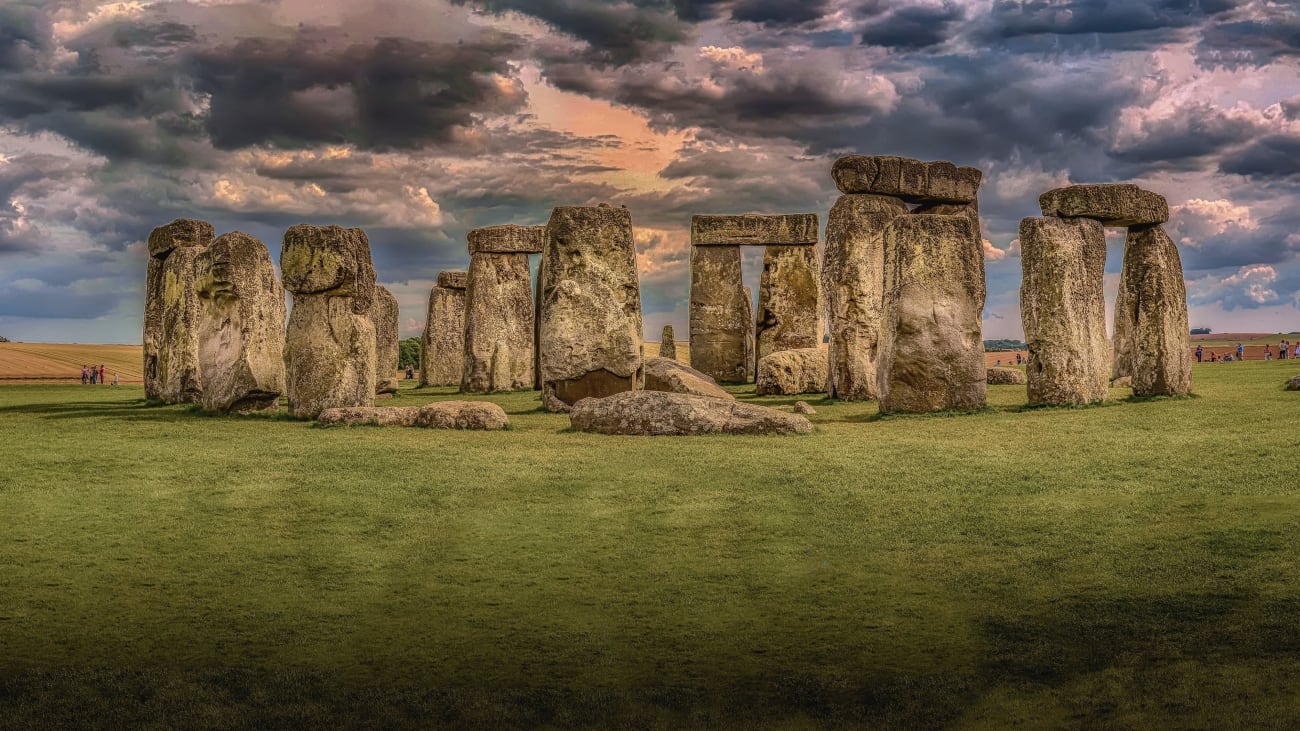
Stonehenge Under The Clouds | ©Pixabay
If you are lucky enough to go to London in summer, specifically in the third week of June, you should not miss the summer solstice celebration held at the nearby megalithic monument of Stonehenge. Between the 20th and 21st of that month, a large number of Britons and visitors from other countries gather for a magical day.
On that day, Stonehenge takes on a different dimension that combines festivity with an attempt to recall ancient pagan ceremonies. Attendees can access the complex for free and can take the opportunity to walk among the stones, something not allowed during the rest of the year.
Contemplate the sunrise at Stonehenge coinciding with June 21
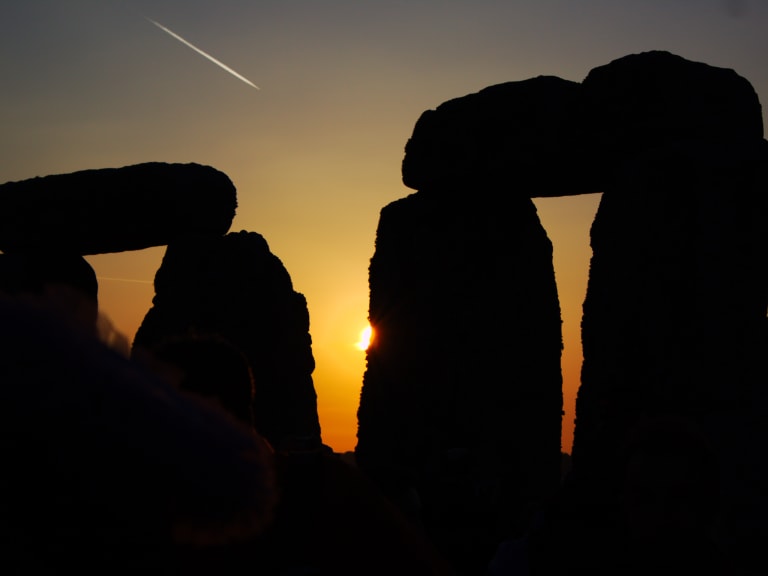
The word solstice comes from the Latin term solstitium, which could be translated as "still sun". One of them, the summer solstice (between June 20 and 21), occurs at the peak of the day and is the best time to book a trip to Stonehenge. These days have always had a special significance, since they mark the changes of the seasons, so important for the agricultural cultures of antiquity.
One of the many theories about the origin of Stonehenge relate it, precisely, with these celebrations. Although the purpose for which it was built has not yet been discovered, what is known with certainty is that during the summer solstice the sun rises to the left of the Heel Stone and crosses right through the central axis of the rock complex.
The mystery of its origin and the way in which the sunrise fits the constructions has made Stonehenge a place of pilgrimage. Thousands of people, many followers of new age philosophies or druidism, go to the monument and spend the night creating an unrepeatable atmosphere. If you decide to go to see the sunrise you have to arrive very early. The complex opens its doors as soon as the first light of the sun appears and the parking lot is not able to handle the number of vehicles that arrive.
Immerse yourself in the atmosphere
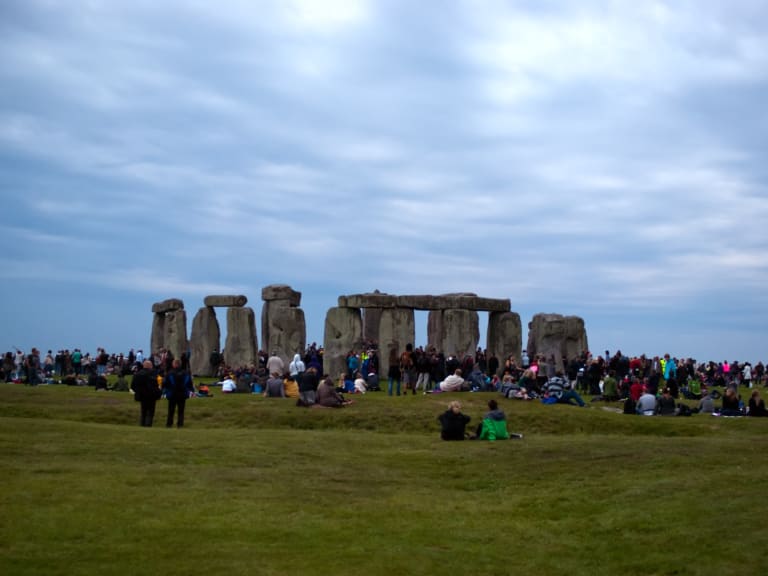
The first reaction of anyone arriving from London with a trip to Stonehenge on Midsummer's Day is likely to be one of awe. The complex and its surroundings are filled with an atmosphere that perfectly combines festivity and mysticism. During the evening, visitors can enjoy the music performed by those present, as well as dances of all kinds.
One of the attractions of the summer solstice at Stonehenge is the people who flock there. Not even in the best musicals in the capital will you find so many costumes. Among these, in addition to the nymph, the druid costumes stand out the most. In fact, many consider druidism as a true religion. You will easily recognize them by their clothing: tunics, cloaks, staffs and Celtic-style jewelry. The women often wear crowns made of flowers and leaves, while the men have long hair and beards.
This colorful atmosphere increases as you get closer to the stone circle. This, the best known of the attractions of the Stonehenge monument, is filled with people meditating and even entering a kind of trance.
Joaquin's Traveller Tip
It is advisable to check the official Stonehenge website of English Heritage for the dates and times of the activities that day, as well as the exact time of sunrise (usually around 5 am).
Contemplate the rituals

On your excursion to Stonehenge, one of the things to keep in mind are the rituals performed there. To understand them, it is necessary to know one of the many theories, more esoteric than scientific, about the origin of the monument. Thus, a physician named William Stukeley affirmed in the 18th century that Stonehenge had been built by the Druids to serve as a temple.
It mattered little that the dates did not match and the monument became a pole of attraction for those who declared themselves followers of Druidic beliefs, closely related to paganism.
The summer solstice is one of the magical moments within these beliefs and Stonehenge is the ideal place to celebrate it. In this way, many people erect authentic altars with candles and natural elements. It is frequent that, within the circle itself, these followers of the Druids sing their songs and perform a pagan ceremony. Regardless of your beliefs, contemplating these rites in such a wonderful setting as Stonehenge is something worthwhile.
Enjoy the sunset

Although watching the sunrise on the 21st at Stonehenge is the most famous part, if you can get from London to Stonehenge the day before you will see that there are already many people waiting to see the sunset on the 20th.
Those present say goodbye to our star to the rhythm of drums that will not stop playing almost all night. The sun ends up hiding between the perfectly aligned stones of the monument, as if it were following a path marked more than 4500 years ago.
Join the party

If you've already enjoyed London's nighttime activities, spending a night at Stonehenge will seem like something completely different. During the solstice celebration there is not only an air of spirituality, but also a more or less riotous party. Attendees drink alcohol and dance during the hours between dusk on the 20th and dawn on the 21st.
One thing to keep in mind if you book your Stonehenge excursion and are planning to join the party, is that you cannot enter the inner enclosure with backpacks or large bags. Likewise, the controls installed control that no glass objects or alcoholic beverages are introduced. Obviously, fires may not be lit.
Joaquín's Traveller Tip
although the atmosphere is generally good, alcohol can sometimes cause incidents. Choose an area where you are comfortable to enjoy yourself without any problems.
Go to the stone circle
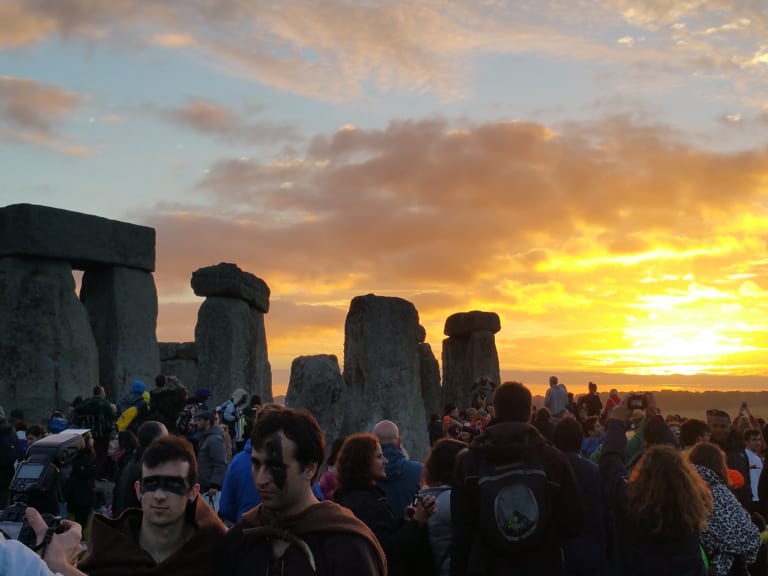
The day of the summer solstice is probably not the best time to enjoy the attractions of the monument. It is really about enjoying the spiritual atmosphere and the activities that the attendees perform.
One of the aspects that you should take into account to better enjoy this day is the place where to stand. If you can, look for one from where you can see the sunset or sunrise among the rocks. Something that is very interesting that day is that you can enter inside the stone circle, something that can only be done on rare occasions and if you book the special activity that the association that controls Stonehenge organizes or any of the tours organized from London that include it.
The summer solstice is one of the few times when you can touch the stones (although for conservation reasons I do not advise it). It is common to find people hugging them or sitting on them to meditate, as if they were in Saint Paul's Cathedral.
Feast at Stonehenge

Certainly, the dining options at Stonehenge during the summer solstice are nothing like what you'll find at, say, The Shard restaurant, but that doesn't stop you from going hungry.
Stonehenge is not only filled with new age or druid followers, but also with picnicking families with children of all ages. If you have organized in advance, you can imitate them and have a bite to eat near the monument.
In addition to that option, you can also choose to buy something at the food trucks that you will find at the monument. As you will have seen if you have taken a food tour of London, one of the attractions of the country's food is the wide range of recipes from all over the world.
Let yourself be dazzled by the full moon at Stonehenge

The magic of watching the summer solstice at Stonehenge is enhanced some years when it coincides with a full moon. That combination has been christened Strawberry Moon and, unfortunately, only happens on rare occasions. Some websites tell you what the moon will be like on each night.
When that happens, it is possible to see for a few brief minutes the sun disappearing at one end of Stonehenge while the full moon appears to be wedged between the stones at the opposite end.
If you are lucky enough to have your stay in London coincide with this circumstance, I recommend that you book an excursion to Stonehenge that allows you to see the sunset.
Find out more about the origin of the festival
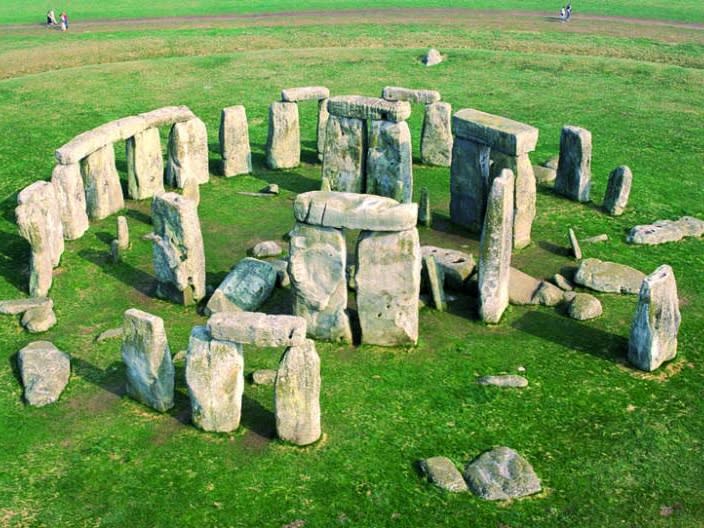
In my experience, knowing something about the place you are visiting, whether it is one of the best museums in London or a megalithic monument, allows you to enjoy your Stonehenge tour more and make it as satisfying as possible.
Beyond some extravagant theories such as the extraterrestrial hypothesis or the aforementioned one about the Druids, the truth is that it is not known with certainty why Stonehenge was erected. One of the most popular theories is that it was an astronomical observatory used by the priests of the time to study the stars and draw up a calendar. This was to serve them to get more out of agriculture and livestock.
The solstices were decisive to know the best harvest (in summer) and sowing (in winter) seasons, so both moments acquired a special and almost magical character. For this reason, it is assumed that farmers celebrated both moments around the Stonehenge structures, which were erected aligned with the axes of these solstices.
Discover the neighboring solar monuments

In the surroundings of Stonehenge other complexes related to the path of our star were erected, as they are aligned with its movements.
Some of them, such as the wooden monument near Durrington Walls or the Neolithic burial mound of Maeshowe are really interesting. If you have time and possibilities (and you have not been exhausted after enjoying the summer solstice at Stonehenge), you can make some extra visits.
The prices at Stonehenge during the summer solstice

If you are visiting London in the summer, a must-do is to take an organized tour to Stonehenge from London. Entrance to the monument that day is free, so you will only have to pay for the transportation used to get there. In my article how to get to Stonehenge from London I explain the different possibilities that exist.
Stonehenge Midsummer Solstice Timetable

Those who want to start the celebration on the evening of June 20 to see the sunset and want to arrive by car should note that the parking opens around 19:00 (although I advise you to make sure in advance on the website of the company that manages Stonehenge), as well as the monument itself.
The parking lot usually fills up early, so it is best to arrive in good time to avoid problems. The entrance of the cars (if it has not been filled before) is cut at 6 am on the 21st and the entrance to the monument at 8 am, putting an end to the celebration.
How to dress for the summer solstice at Stonehenge
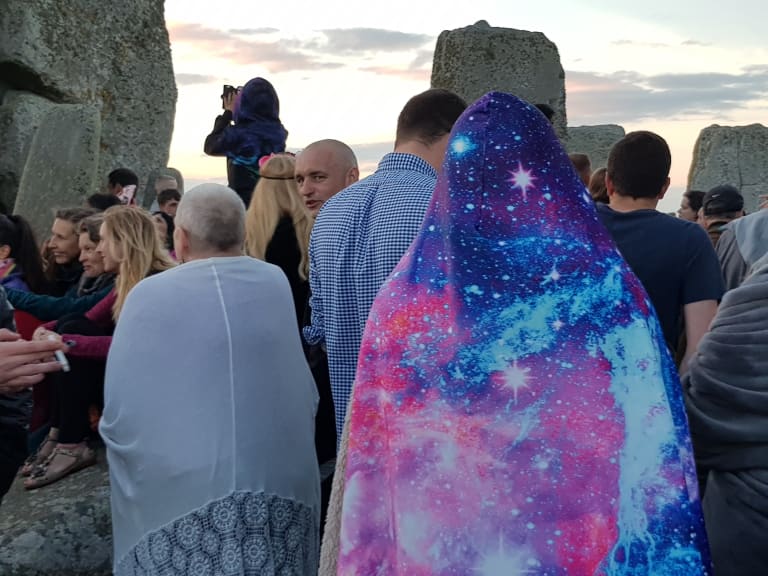
Unless you want to dress up as a druid or similar character, it is best to wear something warm. Even though it is held in the summer, the area is quite humid and it can get chilly at night. A thermal T-shirt can be a great complement. Don't forget to check the weather forecast and take a raincoat just in case.
On the other hand, footwear should be comfortable, as the terrain is uneven. A good flashlight is almost essential to get from the Visitor Center to the monument.
How to get from Salisbury to Stonehenge to see the solstice?

Public transport from London only goes to Salisbury, a few miles from the monument.
Those who choose this option instead of a private car or organized tour will have no problems on the day. From Salisbury train station there are special buses from the Salisbury Reds company that will drop you off at the Visitor Center. The schedules can be consulted on their website.
Once at the Visitor Center you can choose to walk to the monument or get on one of the buses destined to make that journey. If in doubt, ask one of the many volunteers who are deployed throughout the complex that day.
I want to see the summer solstice at Stonehenge, but I can't travel on those dates
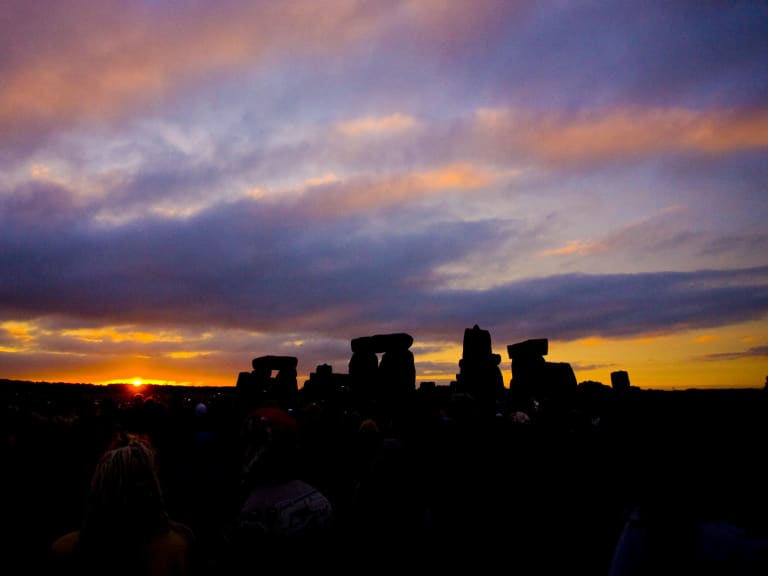
If everything I've told you has caused you to want to see the moment of sunrise at Stonehenge during the summer solstice, but you can't travel to do it at the site, there is a possibility that may (somewhat) alleviate that desire.
Since a few years ago, the event is broadcast by English Heritage through its channels on its social networks. Although you will not be able to enjoy the incredible atmosphere that is generated, at least you will be able to contemplate this beautiful moment live.
